What is Unagi Hitsumabushi?
Hitsumabushi (ひつまぶし) is a local dish of Nagoya City, Aichi Prefecture (where I was born and currently live), consisting of chopped grilled eel mixed with rice. Using an abundance of grilled eel and rice soaked in a special eel sauce, this dish is a specialty worthy of Nagoya, a city with a penchant for luxury.
Although this dish has spread throughout Japan, the name “Hitsumabushi” is actually a registered trademark of the “Atsuta Horaiken” (where the dish was born) restaurant in front of Atsuta Jingu Shrine in Nagoya City. The word “hitumabushi” originates from the finely chopped eel kabayaki scattered (mabusu) over rice in a wooden rice container (hitsu).
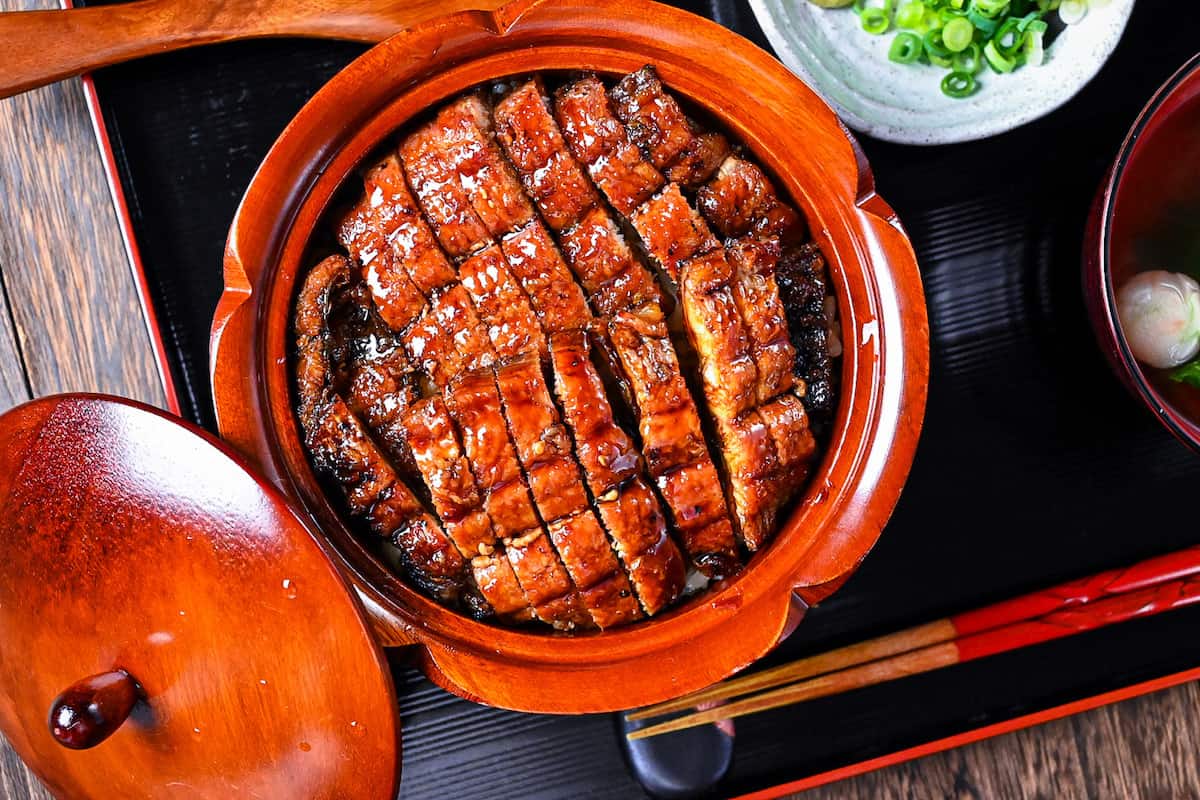
Brief History
Before Hitsumabushi was invented, Houraiken used to deliver unagi donburi in Setoyaki (a type of local ceramics), but it is said that the bowls would break after each delivery, and the restaurant staff would be annoyed and look for a solution.
So, they started to deliver eel and rice for multiple people in a large hitsu (wooden container). It is because of this history that no ceramics are used to serve Hitsumabushi to this day. However, when rice for several people was put into one container, some people would leave some of it behind, so the owner back then came up with the idea of cutting the eel into small pieces and mixing it with the rice. This was essentially the birth of hitsumabushi.
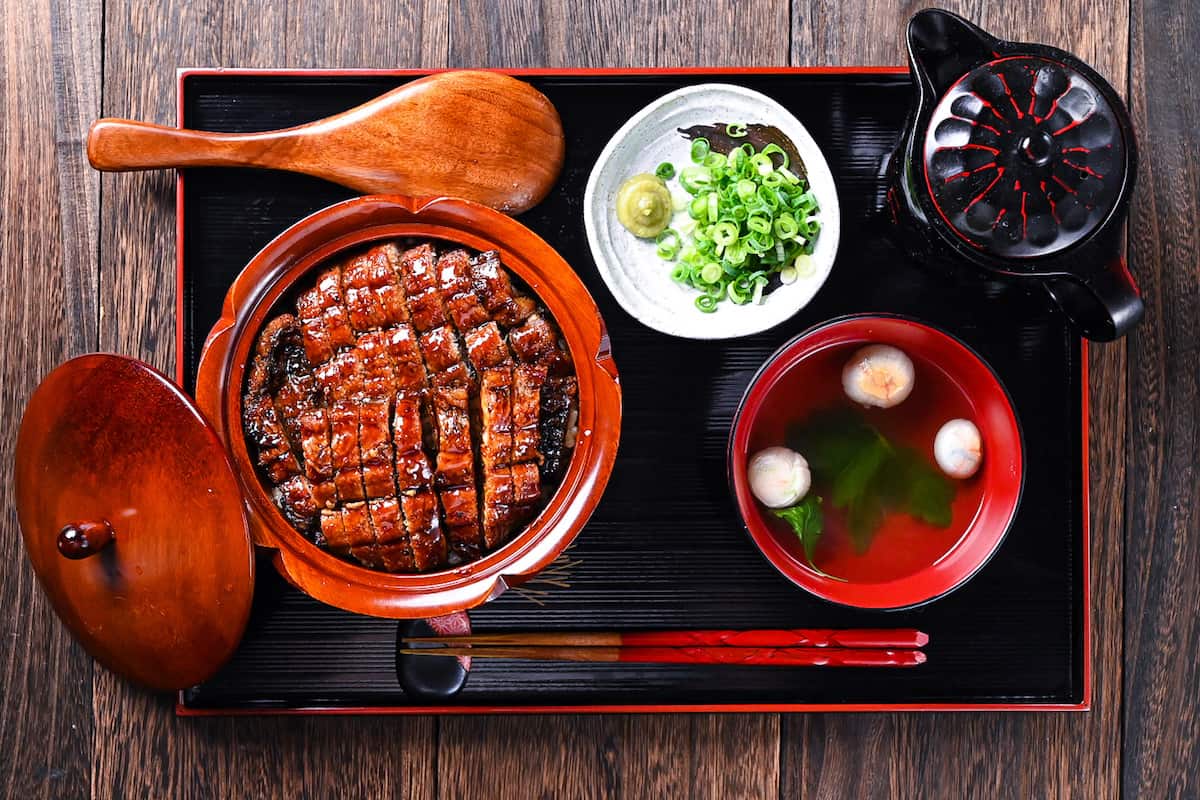
Enjoy the eel in three different ways
Unlike unagi don, there are three ways to eat hitsumabushi.
- Enjoy as it is.
- Enjoy it with condiments (chopped spring onions, kizami nori, etc.).
- Eat it as ochazuke (with hot tea or dashi broth)
You can enjoy eels in three different ways to the end. The beauty of Hitsumabushi is that you can arrange the eel to your liking. My favorite way is actually ochazuke with wasabi.
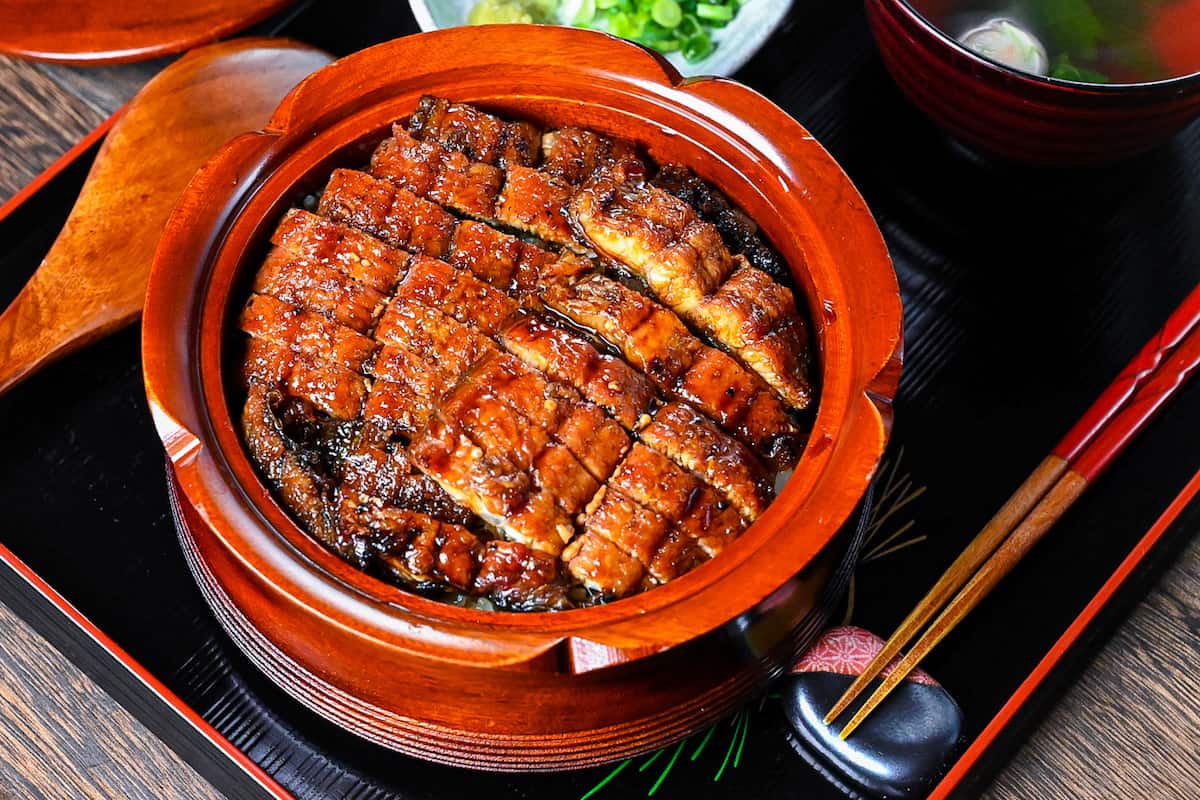
Nagoya meshi (名古屋めし)
As a “foodie prefecture” (which I’m greatly proud of), the term “Nagoya Meshi” has been widely recognized throughout Japan. Nagoya is not just a big city sitting between Tokyo and Osaka!
Nagoya has become famous nationwide for its collection of dishes that belong to a category called “B-class (casual) gourmet,” and some of them can be traced back to around 50 years ago.
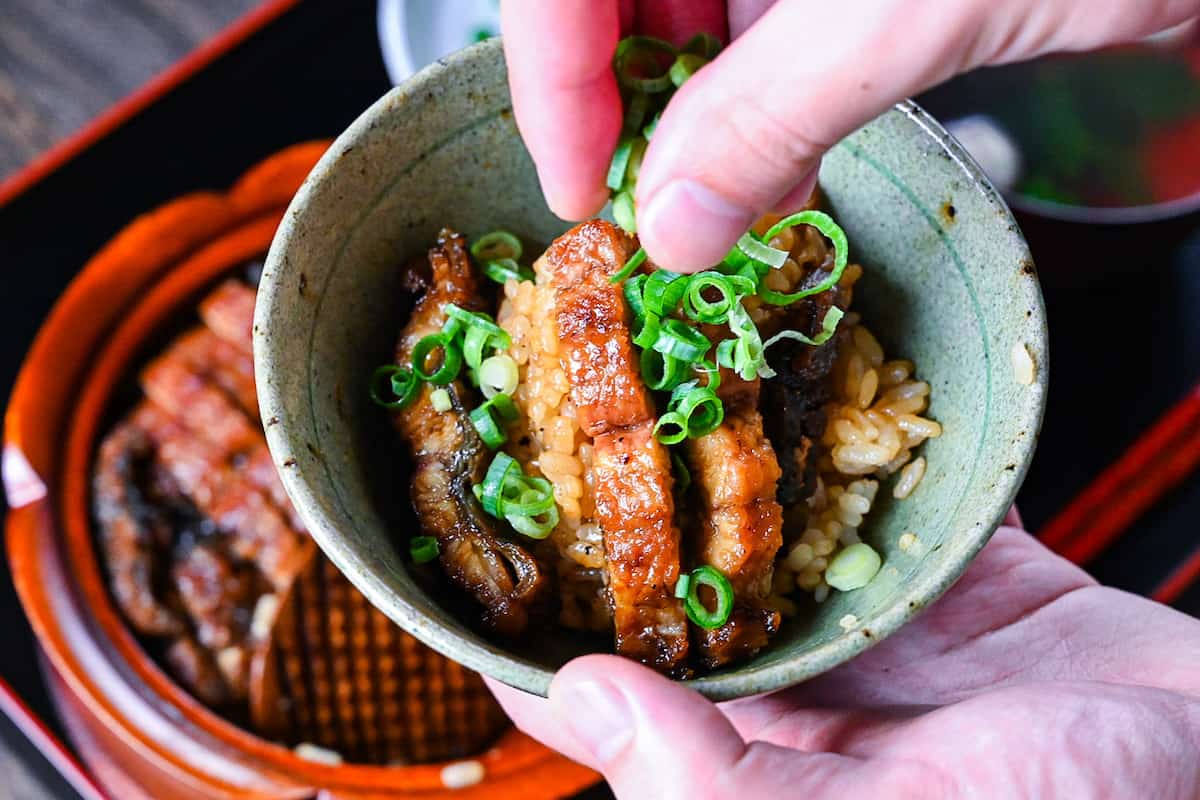
A few examples of Nagoya meshi are:
- Miso nikomi udon
- Miso oden
- Miso katsu
- Fried chicken wings (tebasaki)
- Teppan napolitan
- Taiwan ramen
- Hiyashi chuka with mayo
- Ebi fry
Aichi is definitely not known for being sophisticated in any way… but I can confirm, as a man who was born and raised here, that casual food from around this prefecture is one of the best in all of Japan!
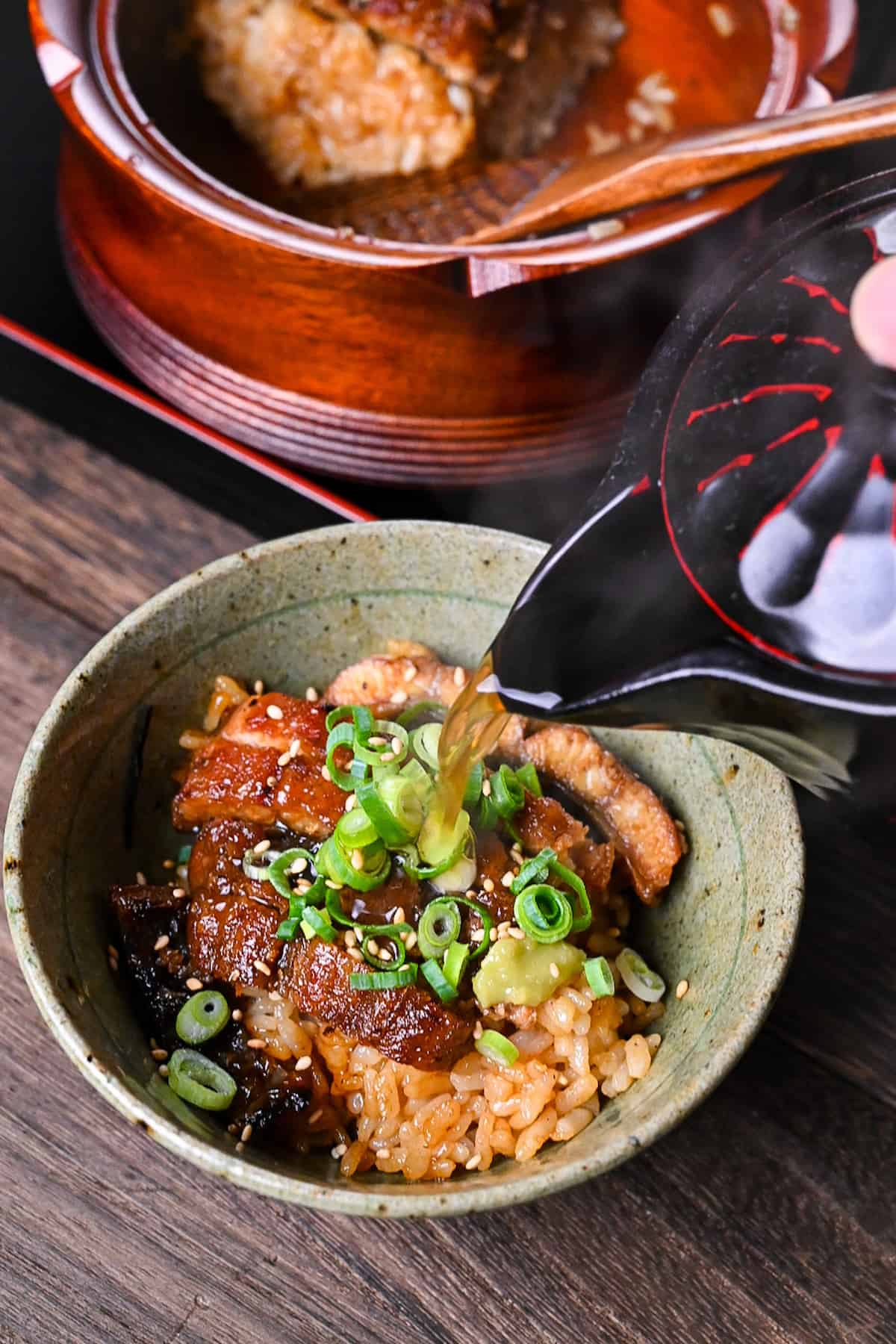
How to Eat Hitsumabushi Like A Native
Hitsumabushi is a local dish, so unless you are from the Nagoya area, even many Japanese do not know how to eat it. But don’t worry, you’re all covered as I’m a native of the area.
Here, I will explain how to eat Hitsumabushi in five general steps.
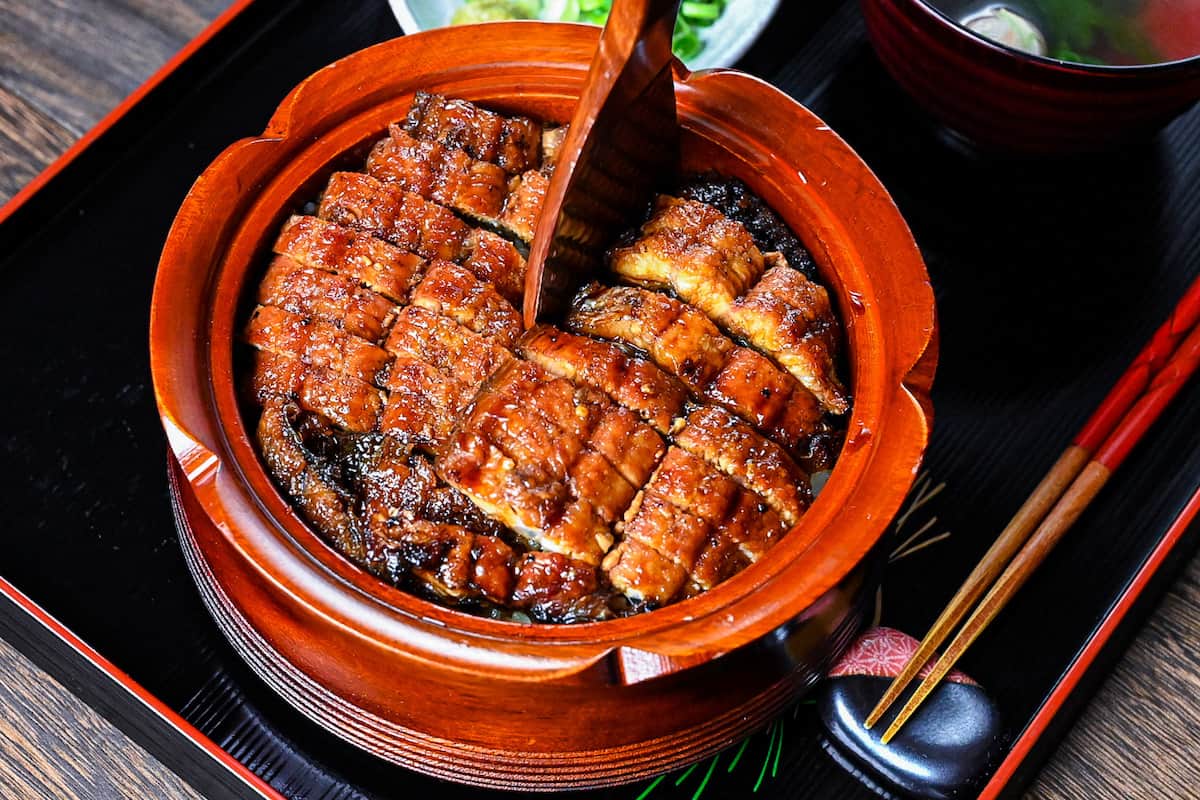
First, divide the hitsumabushi in the bowl into four parts by dividing it crosswise. Rather than dividing with chopsticks, it is easier to divide neatly by using a rice paddle in this step.
Nagoya meshi does not need to be elegant or classy, so let’s be bold here.
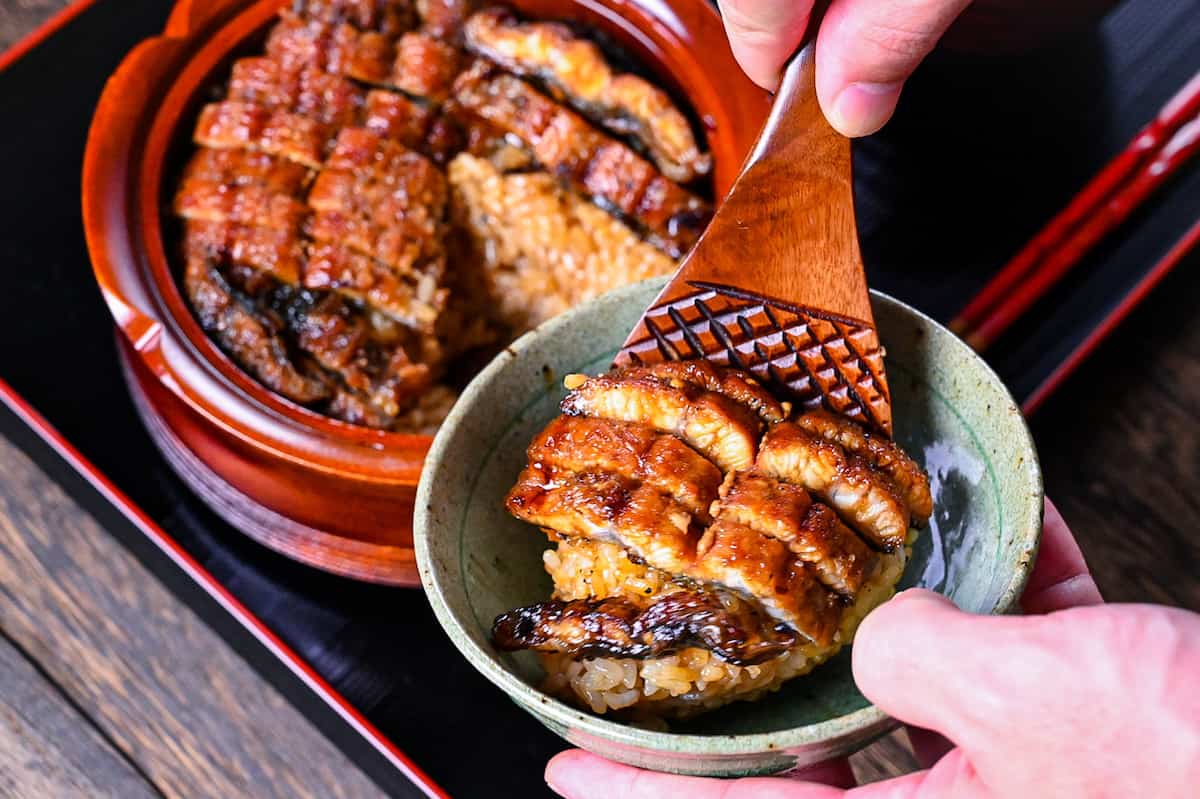
For the first quarter, place it straight into a small bowl and enjoy the taste of the eel and sauce by itself. You can enjoy the same sweet and rich flavor as a regular unagi donburi.
I also recommend adding additional sauce or sansho (Japanese pepper) to taste or mixing the rice and eel. I personally love sansho with unagi!
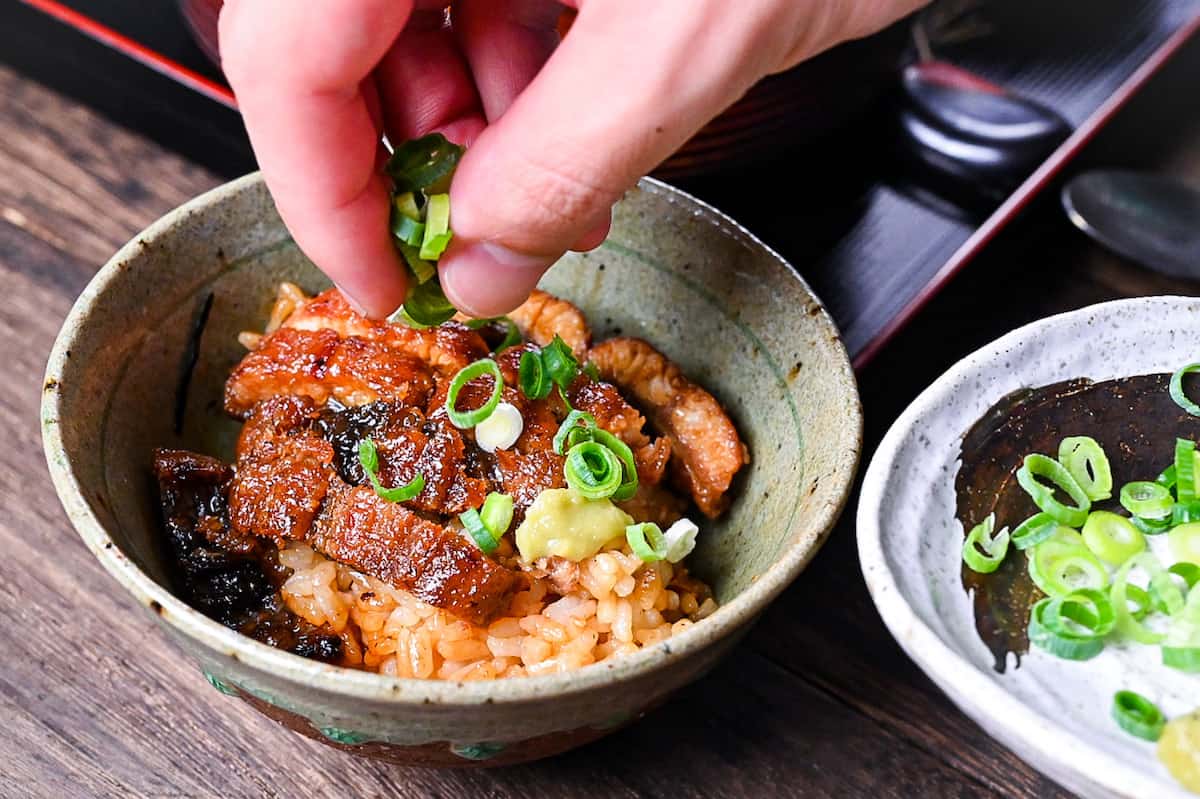
Next, top with finely chopped spring onions, shredded nori, wasabi, and other condiments you like. The best part of this step is to enjoy the arrangement by putting on your favorite condiments.
I personally added spring onions and kizami nori this time! I also highly recommend the fresh wasabi because the aroma and the spicy taste go well with the sweet eel.
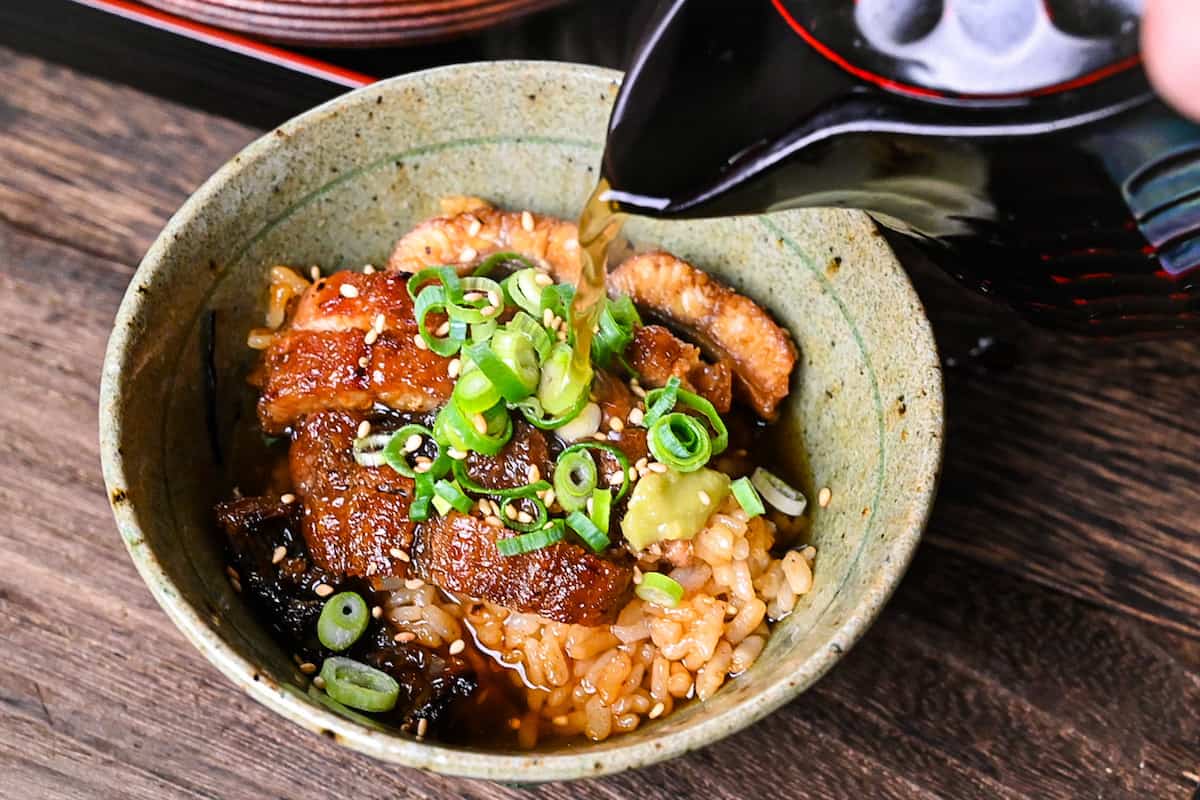
For the third quarter, it is most common to pour dashi/green tea over the hitsumabushi along with toppings and condiments such as wasabi. We call this version “unagi chazuke”. The refreshing taste allows you to enjoy eel in a completely different way.
This is actually my favorite part of hitsumabushi!
You can learn more about ochazuke as a dish on my salmon ochazuke post!
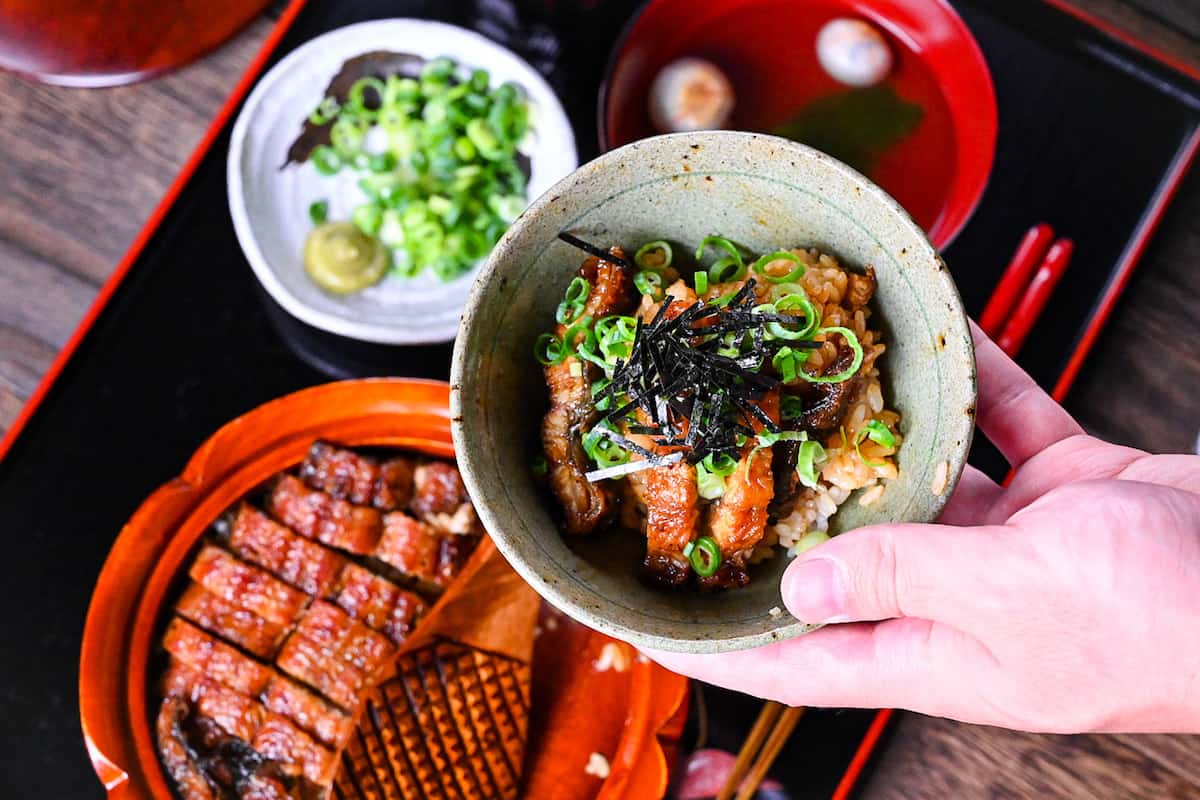
You can eat the last quarter of Hitsumabushi in the way you like the most. That said, you can eat it as it is, with additional condiments or as ochazuke.
I like the ochazuke the most, so I ate my last portion as “unagi chazuke” with extra toppings and broth!
I hope you enjoy this Hitsumabushi recipe! If you try it out, I’d really appreciate it if you could spare a moment to let me know what you thought by giving a review and star rating in the comments below. It’s also helpful to share any adjustments you made to the recipe with our other readers. Thank you!
More Nagoya Meshi Recipes
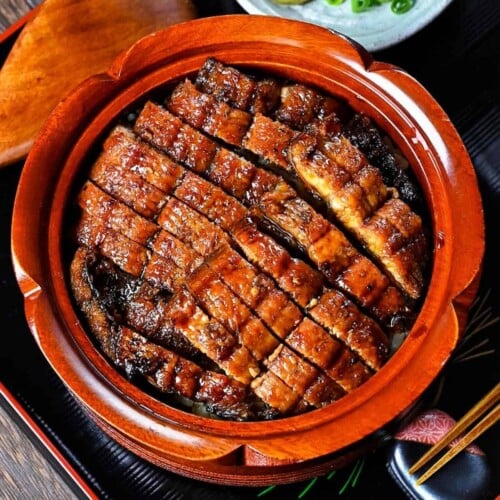
Hitsumabushi (Nagoya Style Grilled Eel)
Ingredients
Unagi Sauce
- 3 tbsp turbinado sugar light brown with coarse texture
- 1 tsp dark brown sugar muscovado or similar
- 5 tbsp sake
- 5 tbsp mirin
- 5 tbsp Japanese soy sauce (koikuchi shoyu)
Unagi
- 300 g filleted eels
- 2 tbsp sake
- 300 g cooked Japanese short-grain rice
- 1 pinch Japanese sansho pepper optional
Extra condiments / toppings for hitsumabushi
- ½ tbsp unagi sauce to mix with rice
- 300 ml dashi stock for ochazuke
- 2 g green tea bag for ochazuke
- 2 tsp Japanese soy sauce (koikuchi shoyu) for ochazuke
- 1 tbsp finely chopped green onions
- 1 tbsp kizami nori (shredded nori)
- 1 tsp wasabi paste
- 1 tsp toasted white sesame seeds
My recommended brands of ingredients and seasonings can be found in my Japanese pantry guide.
Can’t find certain Japanese ingredients? See my substitution guide here.
Instructions
Unagi Sauce
- Add 3 tbsp turbinado sugar and 1 tsp dark brown sugar to a sauce pan. Place the pan on the stove and turn on the heat to medium-high.

- Once the sugar starts to melt, add 5 tbsp sake and 5 tbsp mirin. Bring to boil and allow to bubble for 1-2 minutes, stirring occasionally.

- Add 5 tbsp Japanese soy sauce (koikuchi shoyu) and lower the heat to a simmer.

- Simmer until thickened slightly (about 10 minutes). Stir occasionally to prevent the sugar from burning. Remove the scum/foam that forms on top.Remove from the heat and allow to cool while preparing the eel.

Unagi don
- Wash 300 g filleted eels with cold running water. Cover a chopping board with plastic wrap and place the eel on top. Cut each eel into 2-3 pieces by pressing a sharp knife into the area you want to cut and pushing the eel back and forth over the plastic wrap.

- Place the eel in a frying pan with the skin side down and add 2 tbsp sake.

- Turn on the heat to medium-low and steam for 3 minutes with the lid on. Remove it from the heat and line the grill with foil. Preheat the grill on medium-high for 5 minutes.

- Place the eel on the foil with the skin side down and grill for 6 minutes.

- Turn the eel over and grill the skin side for 5 minutes or until lightly charred.

- Apply the sauce generously but evenly over the skin and place back under the grill for 30 seconds.

- Turn the eel over and apply the sauce on the meat side and grill for 30 seconds. Repeat 2 more times on each side (6 times in total).

- Cut the grilled eel into strips.

- Mix some of the left over unagi sauce with the rice. (Approx 1/2 tbsp per 2 portions of rice.)

- Divide the rice into wooden bowls and top with the grilled eel. Brush liberally with more unagi sauce.

How to enjoy hitsumabushi (3 ways)
- Brew 2 g green tea bag in 300 ml dashi stock (approx 80 °C (176 °F)) and add 2 tsp Japanese soy sauce (koikuchi shoyu). Brew for 2-4 minutes then remove the teabag. Serve in a teapot or jug placed on the table.

- Divide the eel and 300 g cooked Japanese short-grain rice into quarters using a rice paddle.

- Take out the first quarter and place it in an individual rice bowl. Eat as it is. (Optional – Sprinkle with 1 pinch Japanese sansho pepper to taste.)

- Place the second quarter into the same bowl and add toppings such as 1 tbsp finely chopped green onions, 1 tbsp kizami nori (shredded nori) or 1 tsp wasabi paste.

- For the third quarter, add it to the bowl and then pour the dashi tea over the top. (This is also good with wasabi and additional toppings such as 1 tsp toasted white sesame seeds.)

- Enjoy the final quarter using your favourite from the 3 above.

- Enjoy!
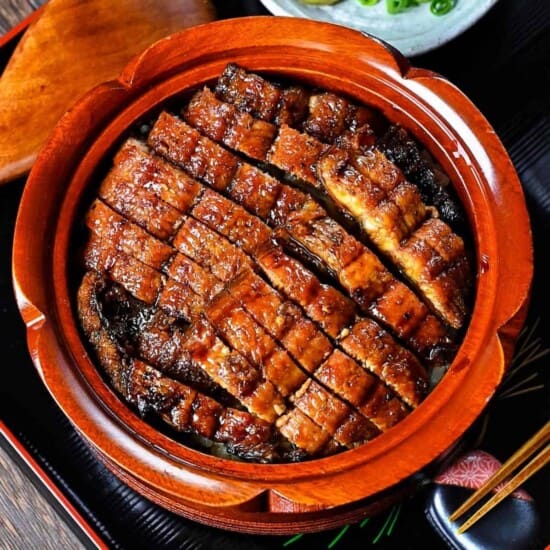


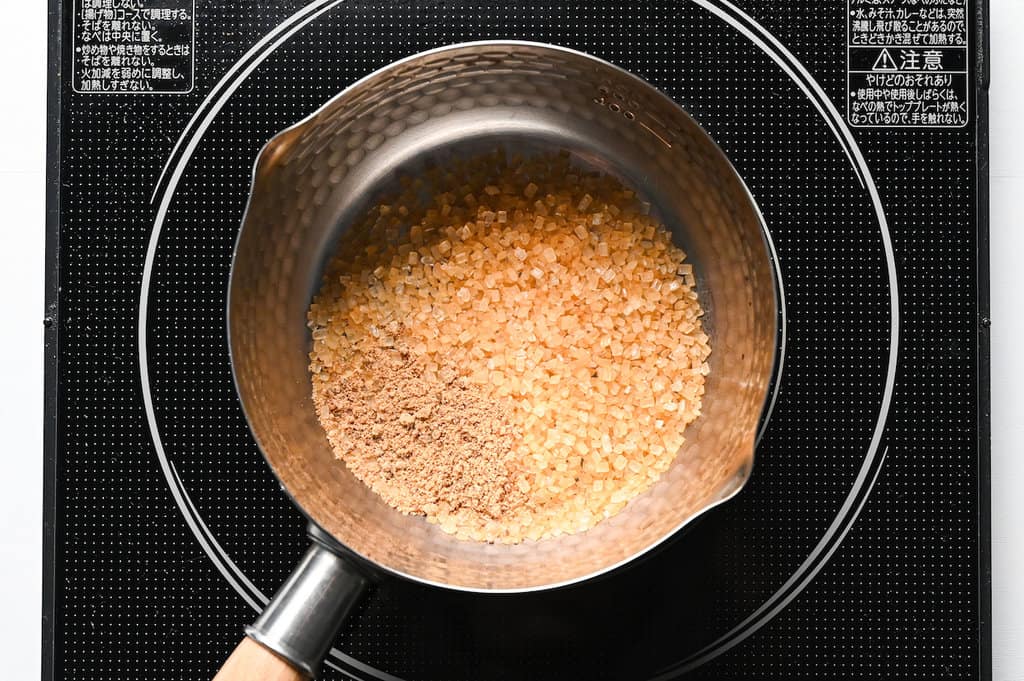
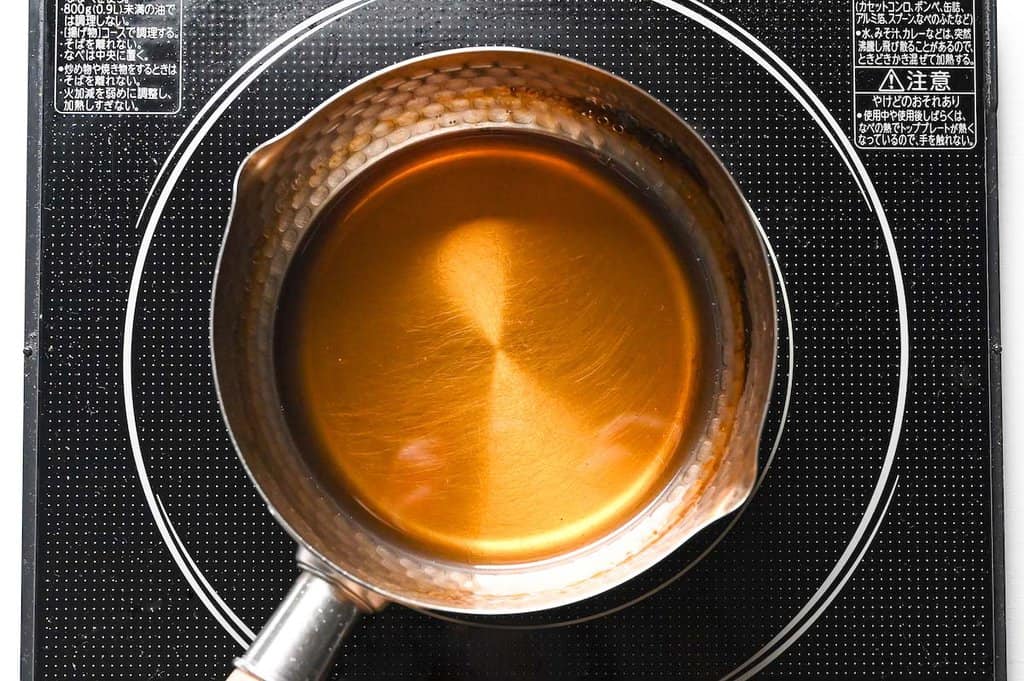
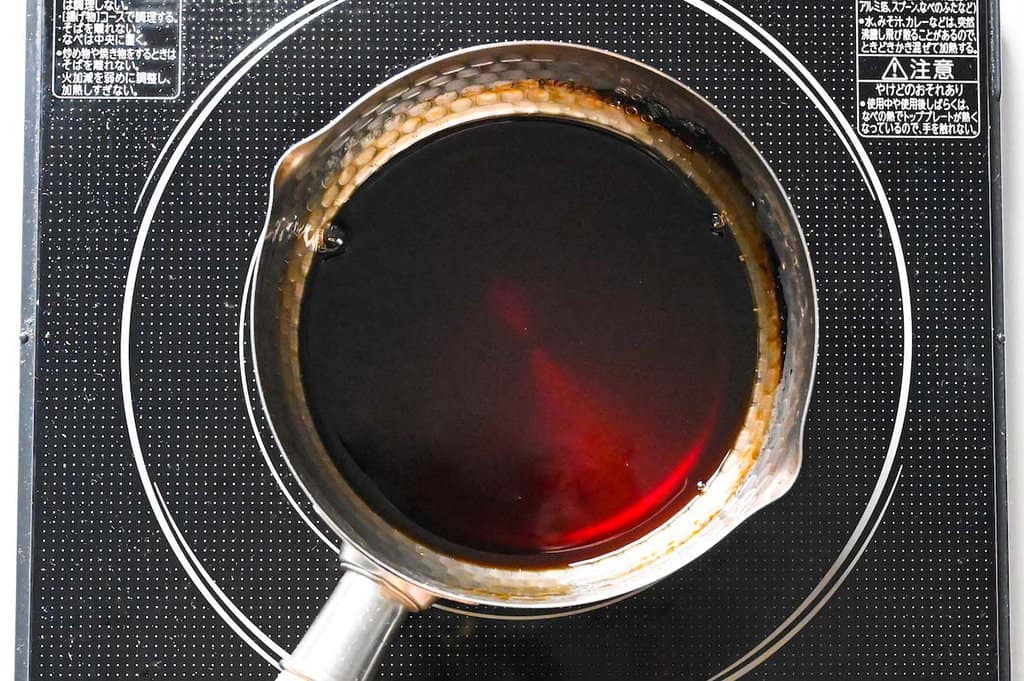
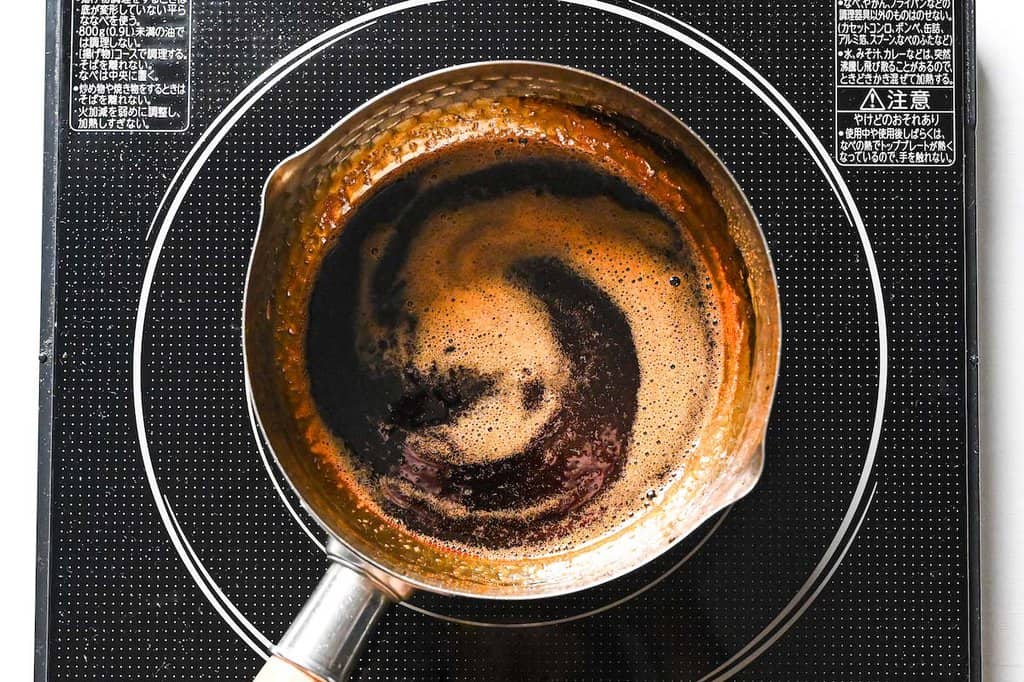
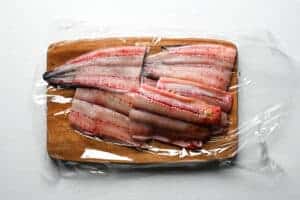
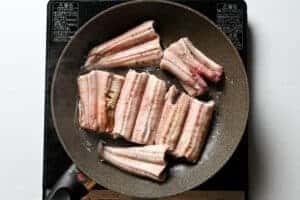

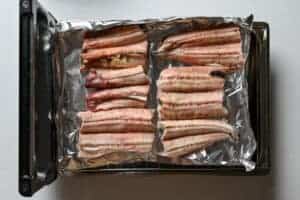
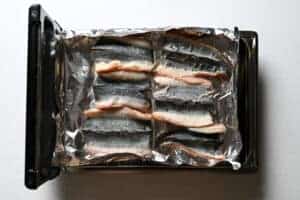


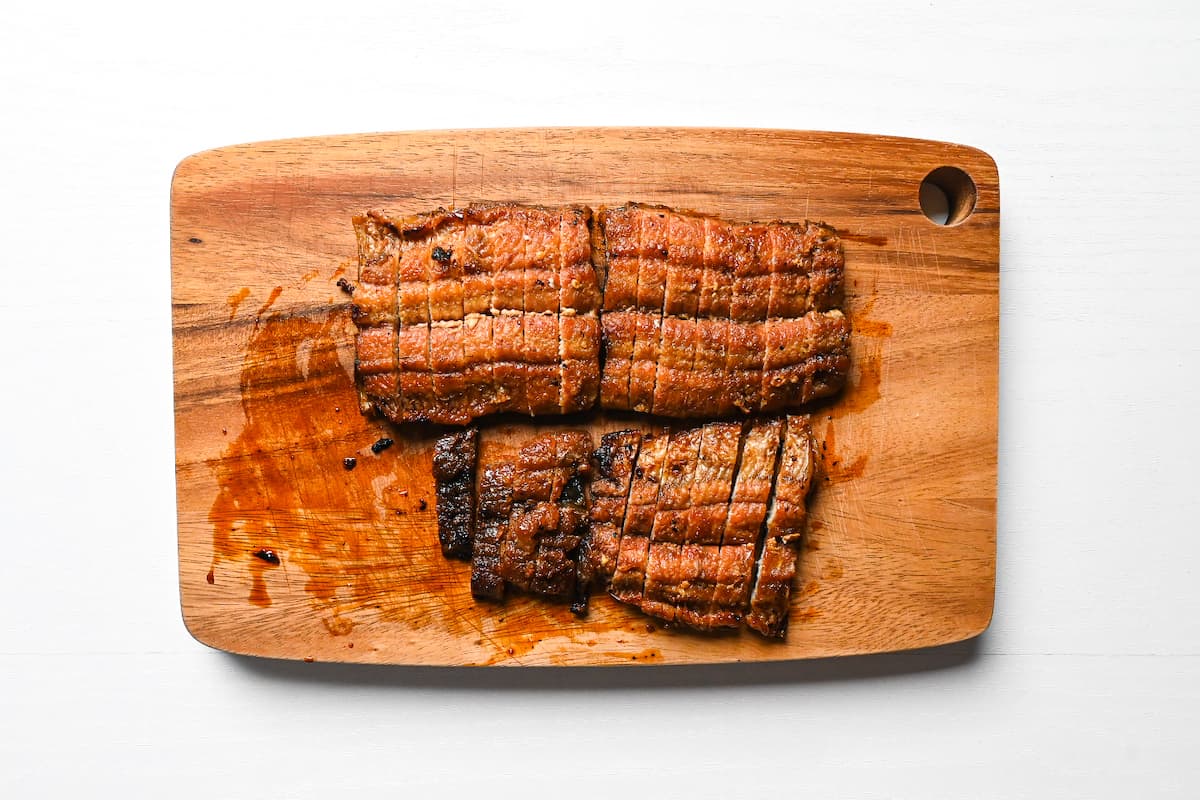
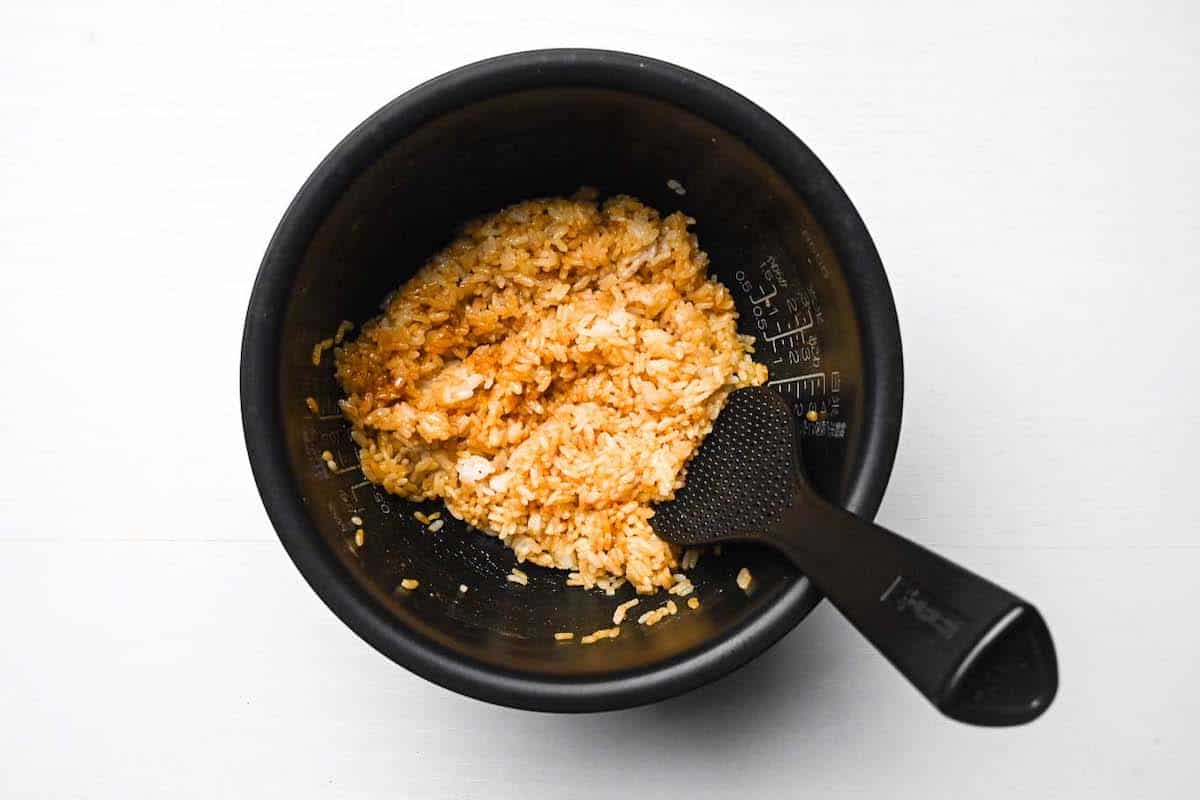
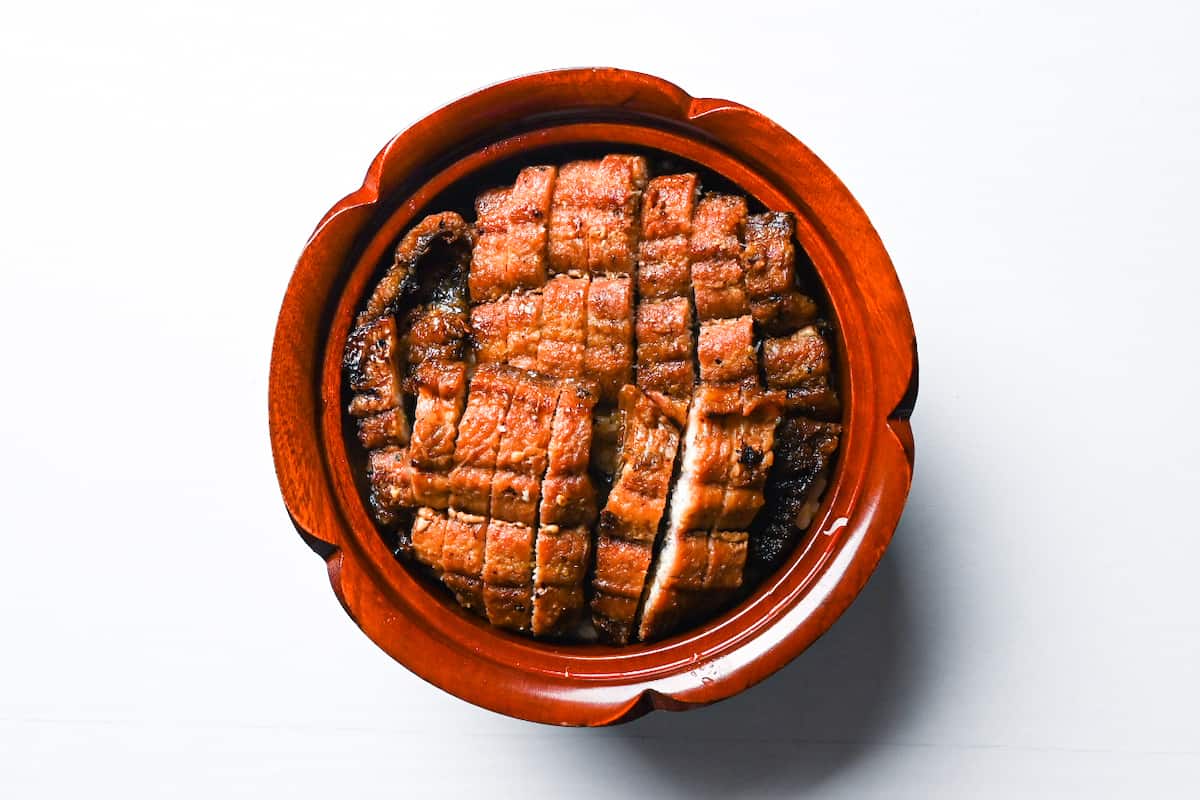
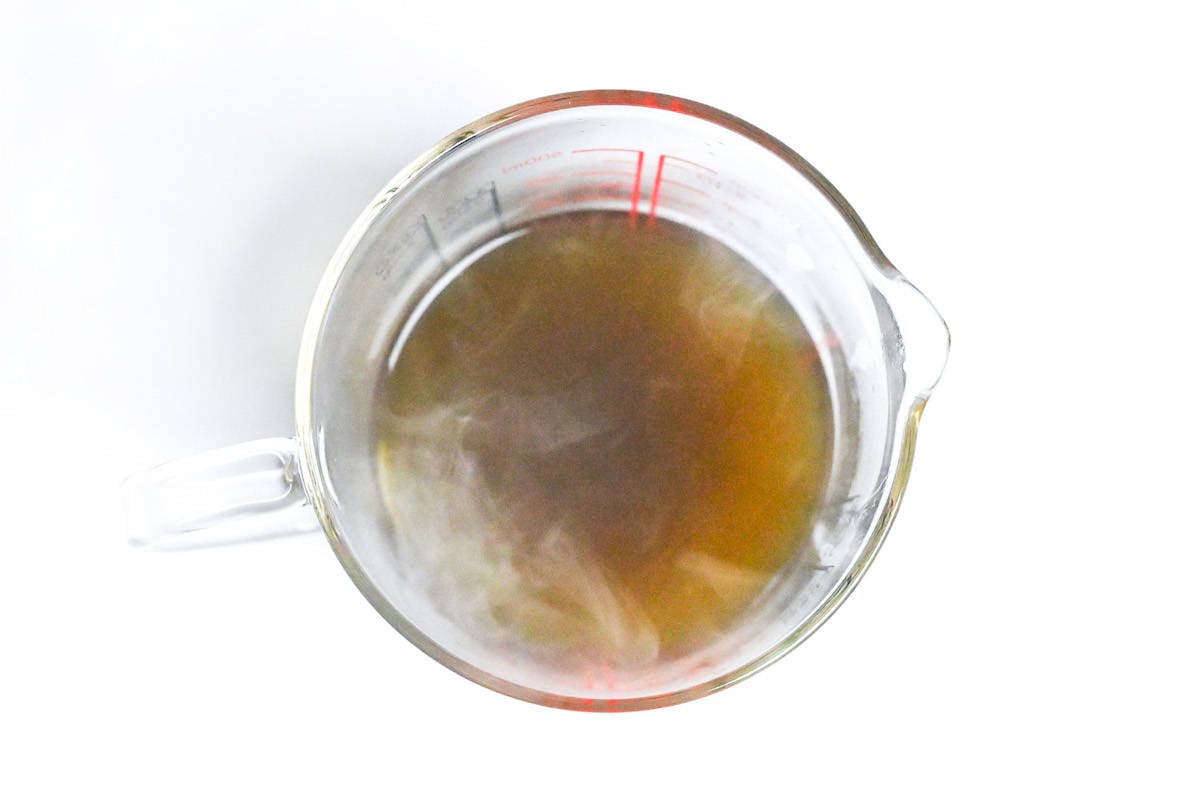
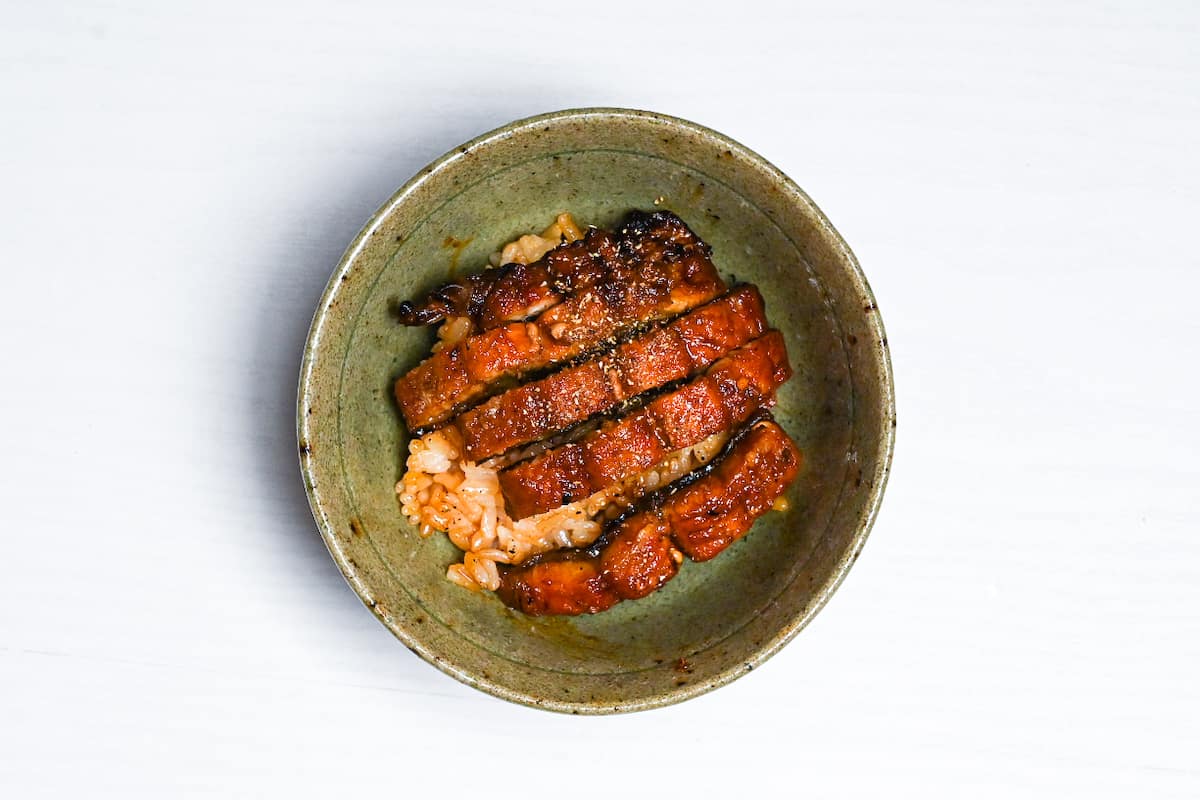
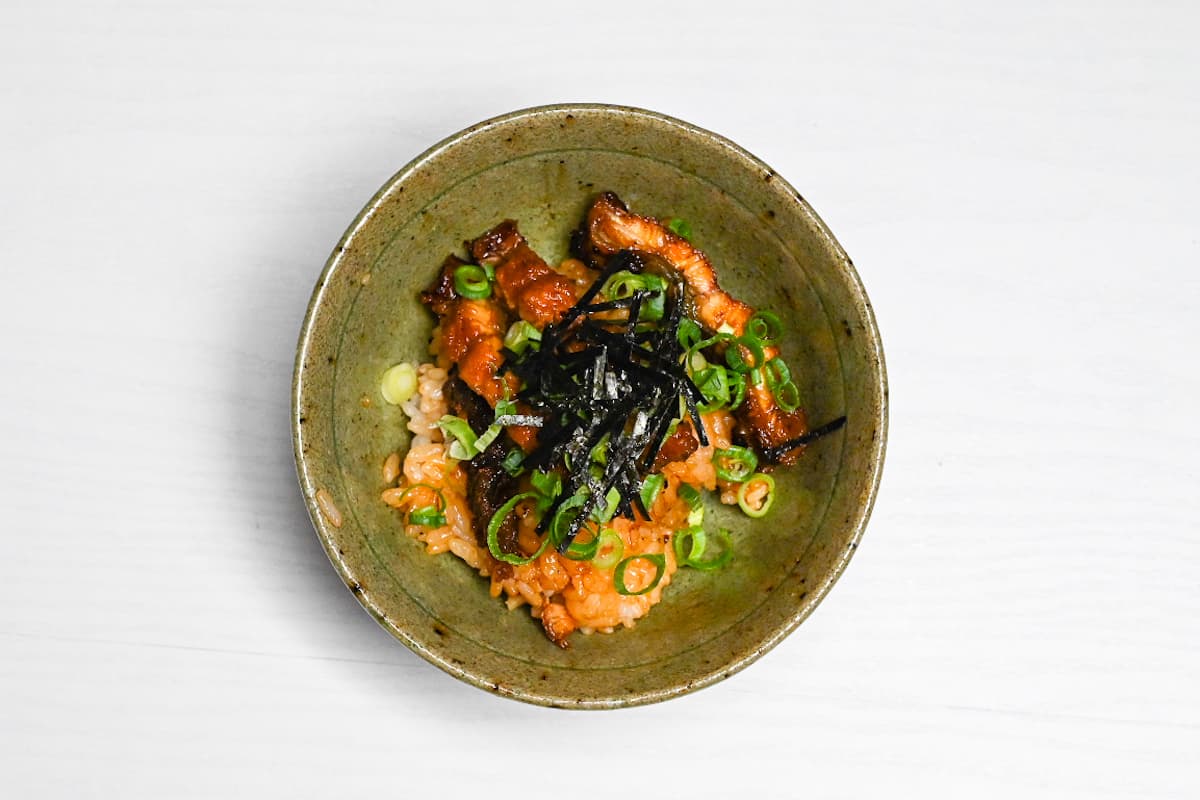

I love this eel recipe, in fact grilled eel is wonderful in almost any form. It’s very hard to find it in the UK, and if you do, it’s very expensive -but well worth it.
Your recipes are invaluable to us in the ‘Anglian’ region, as so much is difficult to source locally.
Hi Vincent,
Thank you for your comment and sharing your experience!
Yuto